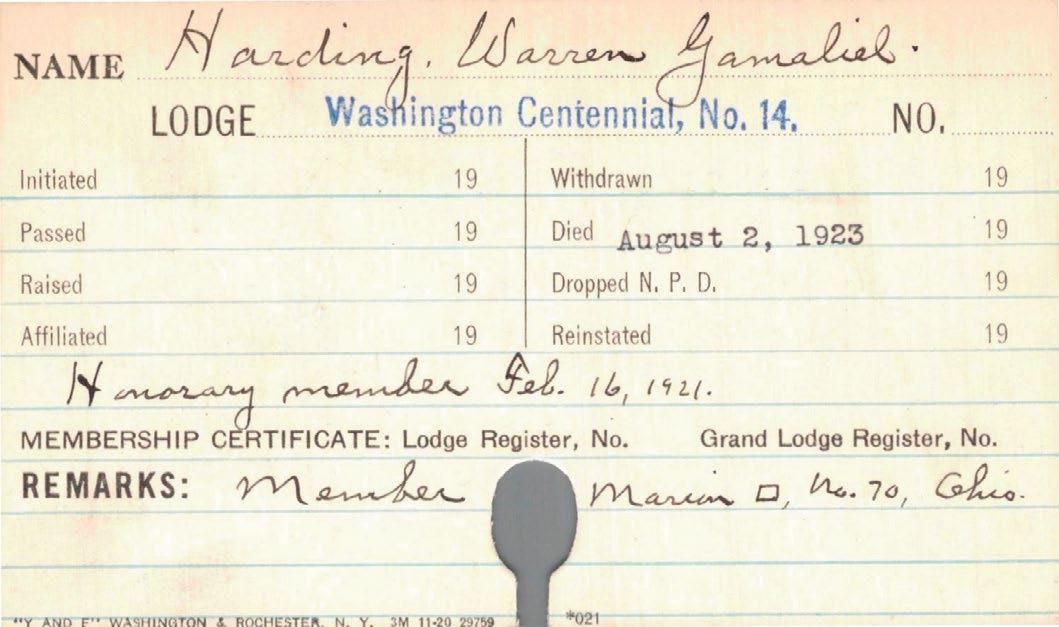
5 minute read
Digitizing our Grand Lodge Membership Card Catalog
B. Chris Ruli, Grand Historian
For more than a century, the Grand Lodge of the District of Columbia has maintained a large historical register of the District’s Freemasons, housed in a large card catalogue. Up until last year, this massive catalog has remained relegated to the Grand Lodge office untethered to the digital world. While COVID-19 has curtailed Masonic activities across the jurisdiction, the pandemic did provide an opportunity to begin digitizing one of our most important Masonic resources in the District.
Advertisement
The card catalog project began in earnest in 1901, when Grand Master Harry Stanford introduced the topic during the Grand Lodge’s Annual Communication. MWB Stanford believed that a catalog, which had been implemented in other jurisdictions, would greatly improve internal processes and reduce time to investigate membership inquiries. Up until this point, membership inquiries bypassed the Grand Secretary’s office and were often transmitted directly to a lodge’s secretary. Secretaries maintained their own internal records with varying complexity. But as interest in Freemasonry grew during the turn of the century, so did the need for a standardized and centralized system to track membership.
For much of the jurisdiction’s early history, Masons verified membership through letters and physical methods; signs, grips, and words. Lodges issued certificates upon request, mostly for those who relocated out of the District. The Grand Lodge rolled out a standardized certificate system in 1895, but those certificates provided limited information—mostly when a candidate received his degrees, and was never updated. Thus, secretaries had to develop their own methods to track important milestone dates including demits, suspensions, withdrawals, and deaths.
The Grand Lodge agreed to proceed with the card catalog project in 1901 and MWB Stanford appointed Bros. George Corson, W. A. Craig, and Orville Drown to develop a proposal. Bro. Corson and company were already familiar with catalogs, having helped maintain the War Department’s system, which at that time was one of the largest card catalogs in the country. The committee returned the following May with a proposal for $185 ($5,700 in 2021 adjusted for inflation) to purchase two large index card cabinets and an initial batch of thirty thousand blank cards. The proposal was accepted, and Grand Secretary Arvine Johnson was allotted an additional ($300, or $9,000 in 2021) to hire clerical support.
In order to process the first batch of cards, composed of 1863 through 1902, Johnson contracted Bro. Paul Neuhaus, a professional cataloger, for assistance. Bro. Neuhaus, a member of Hope Lodge No. 20, completed the task within a year. He also uncovered more than a thousand errors in Lodge returns, which required “voluminous correspondence” between the Grand Secretary’s office and constituent Lodge secretaries to run down and correct. In 1904, he expanded the catalog to include historical membership prior to 1863, rejected candidates, and updated the existing cards to include any officer positions served. Bros. Johnson and Neuhaus completed their project by 1905 with approximately 21,800 cards on file.
Membership cards contain personal and Masonic information. The data includes name, Mother Lodge, dates for degree conferral, affiliation, or other changes to membership including suspension for nonpayment of dues, death, and withdrawal. Each card also includes a space for notes, which has often been used to document the person’s service as a Lodge or Grand Lodge officer, their Mother Lodge (if they affiliated), or special notes and historical information.
As blank cards ran out, newer cards with additional fields entered circulation. Bro. Neuhaus and his successors filled out each card by hand, and later by typewriter as the office updated with the times. The system remained in use under the Grand Secretary’s guidance throughout the twentieth century.
The first steps towards a cardless system occurred in 1988 when Grand Secretary Stewart Miner transferred the card catalog onto Microfiche. But the new format ultimately became just as cumbersome, due to the large equipment needed to view the files, and the flammable nature of the media. The Grand Lodge moved to the first digital database in the nineties. The
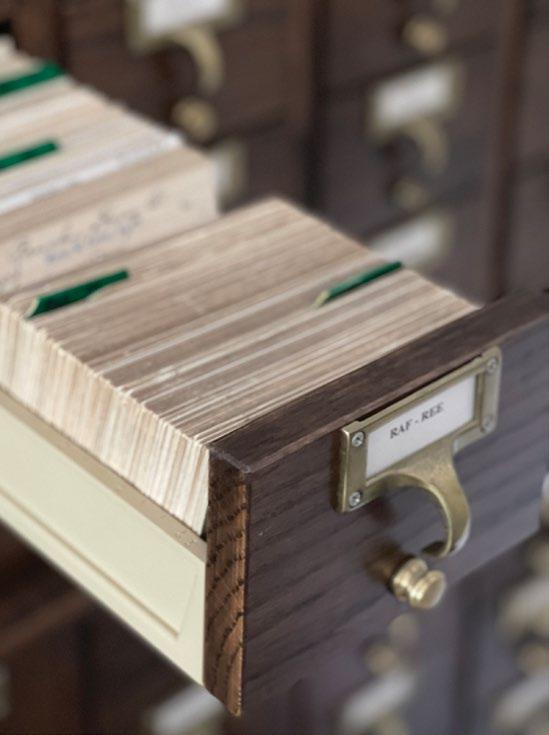
digital system focused primarily on the current, active membership, though, and the card catalogue has remained in use for historical inquiries.
Plans to digitize the card catalog and integrate it with the new electronic database are probably as old as the original database, itself. However, the cost in both dollars and man hours to take on such a large project has always been an issue, until now.
Scanning technology has improved over the last decade, which now enables us to take on more digitization projects “in house” at the Grand Lodge office. That said, it is still a time-consuming and human directed endeavor. Due to their format, cards must be individually scanned and processed. Cards originally filled using a typewriter can be further processed through Optical Character Recognition software (OCR) to become keyword searchable, but the majority of the card catalog was filled out by hand, and OCR programs cannot accurately transcribe handwriting. So, the information on these cards must be hand typed into the file for it to become searchable. As of this article, we’ve digitized membership cards A through L, with plans to complete the project’s first phase by the end of this year. When complete, the digital card catalog will be a new resource for D.C. Masons and researchers to quickly identify former members and uncover our Masonic history. Plans are currently in the works to determine the best way to share this interesting and valuable resource.
Stay tuned for more updates and milestones! Until then, here are a few gems from the old card catalogue:
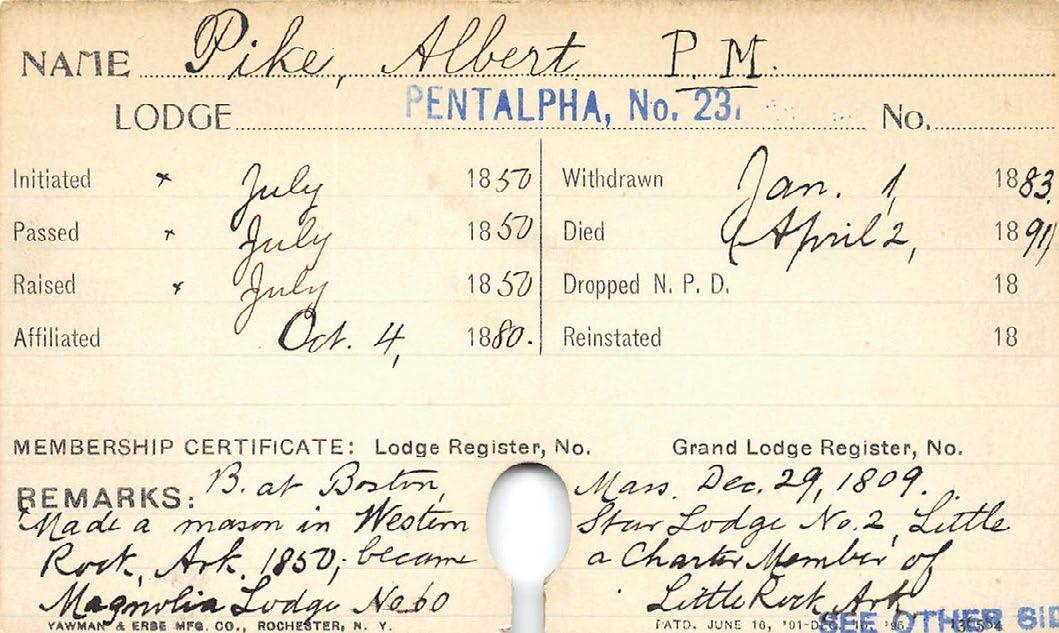
Albert Pike
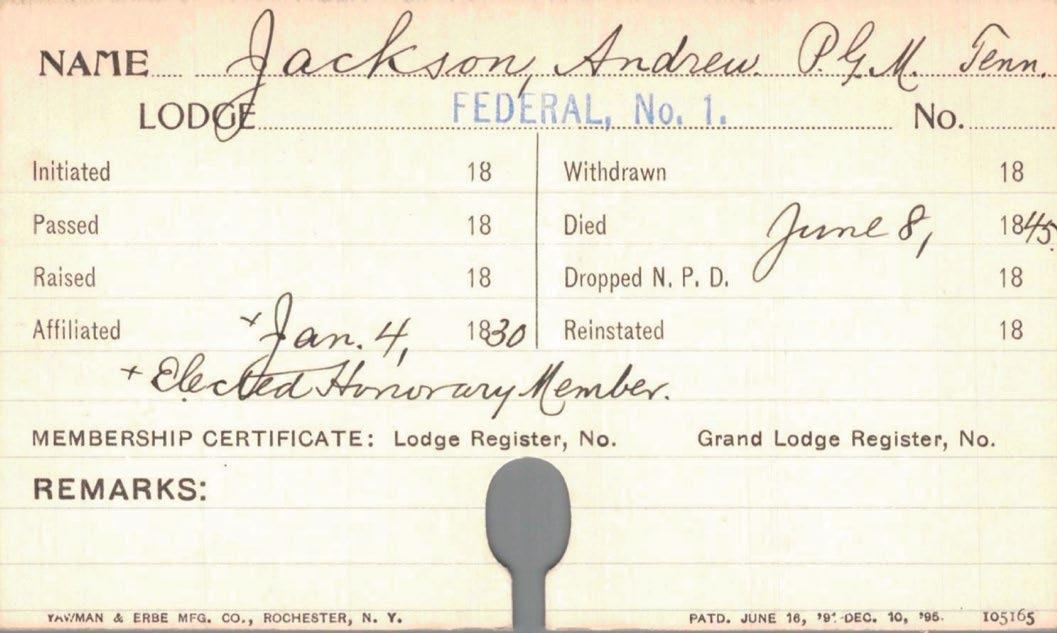
Andrew Jackson Carl Claudy
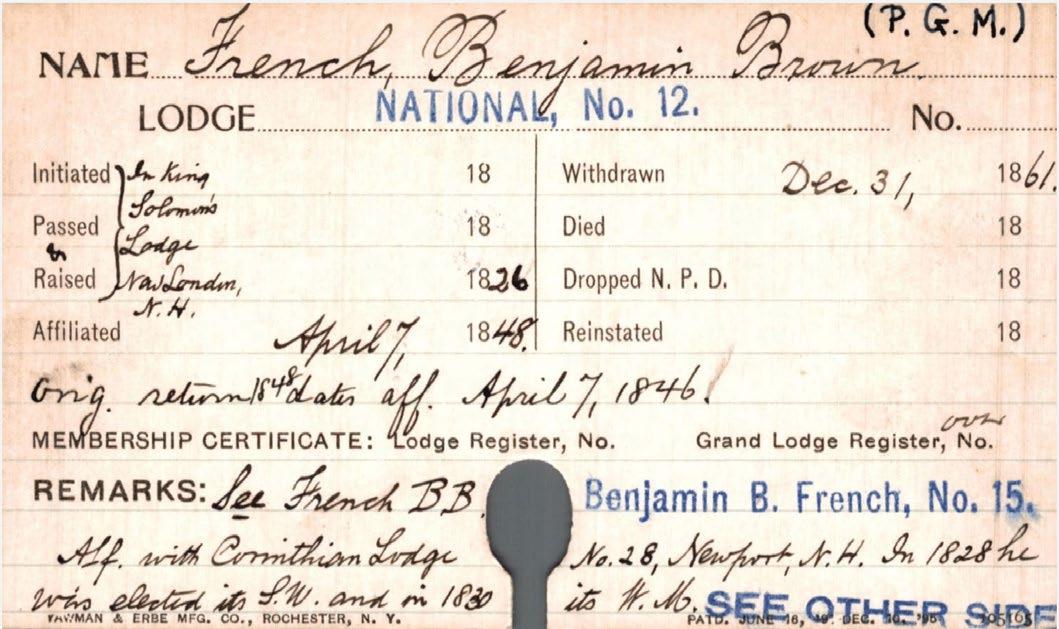
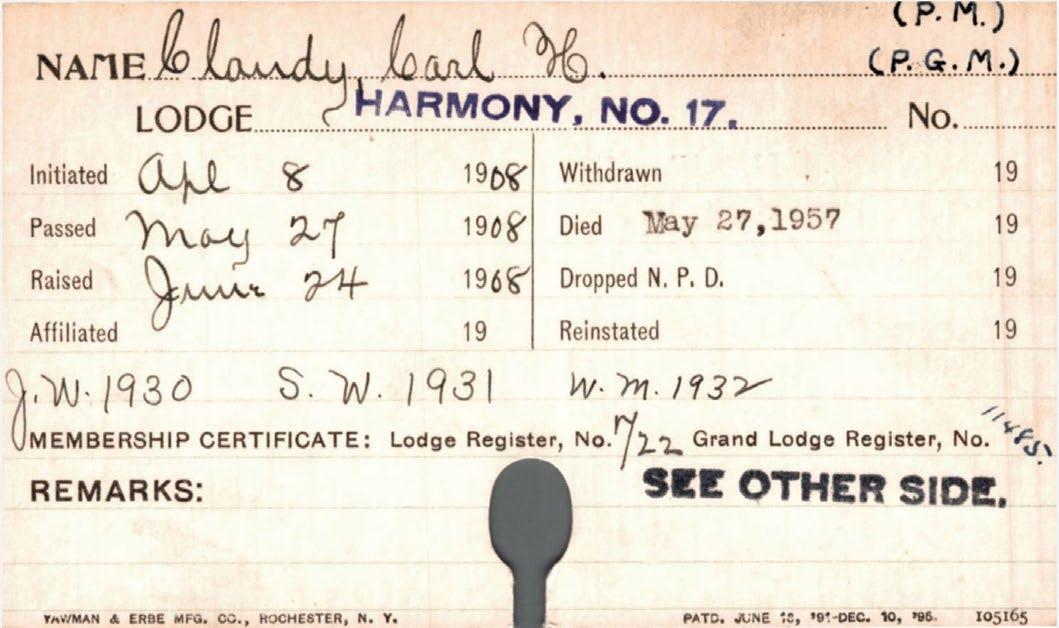
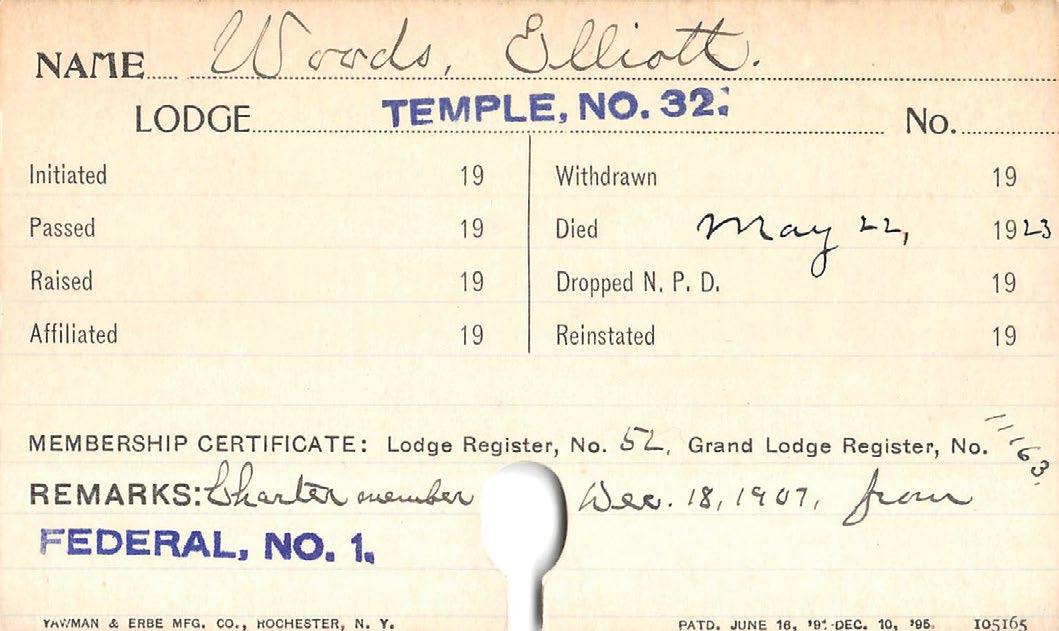
Elliott Woods
